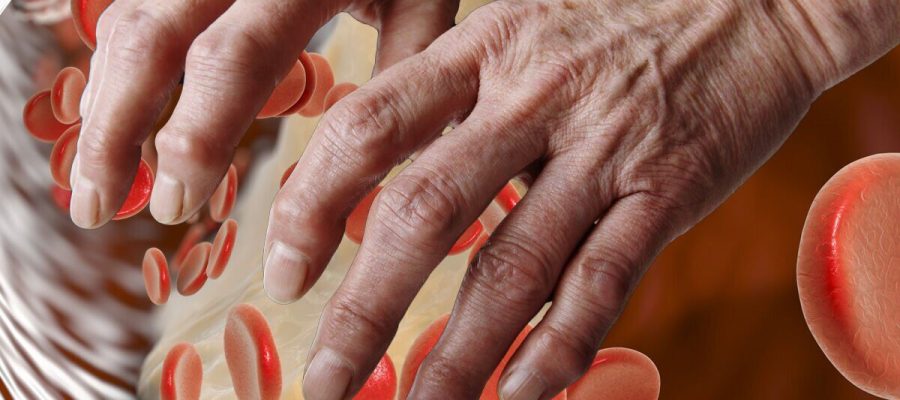High cholesterol: Nutritionist reveals top prevention tips
We use your sign-up to provide content in ways you’ve consented to and to improve our understanding of you. This may include adverts from us and 3rd parties based on our understanding. You can unsubscribe at any time. More info
Cholesterol is a waxy substance that helps harmful plaque grow inside the arteries, setting the stage for heart attack and stroke. The condition isn’t clinically tied to any symptoms, but as lipid levels grow, signs are bound to arise. Cholesterol-filled lesions in the palm of your hands could be indicative of high cholesterol levels, according to health bodies.
As lipid levels climb, they become concentrated in lesions that sit on the surface of the epidermis, known as xanthomas.
These xanthomas can appear in many places on the body, but occasionally they can become clustered in the palms of the hands.
The health platform Mount Sinai explains: “Xanthomas are lesions on the skin containing cholesterol and fat.
“When these lesions appear in the palms of the hands, they present as yellowish nodules of slightly raised papules and plaques that involve palmar creases.”
READ MORE: High cholesterol: Changes in your eyes particularly worrying for those under the age of 45

When the lesions appear solely on the palms of the hands, the condition is medically recognised as palmar xanthomas, but many other forms of xanthomas exist.
An eruption of xanthomatosis, for example, can cause the harmless bumps to grow on the arms, legs, and sometimes on the tendons in the feet and shoulders.
The growths can be removed surgically, or treated using laser surgery, but chemical treatments with trichloroacetic acids are equally effective.
Controlling cholesterol levels effectively, however, offers the best chance of avoiding the condition altogether.
How to lower cholesterol levels
Foods can cause cholesterol levels to rise, and some of the key culprits include saturated fats.
Trans fat and easily digested carbohydrates may also boost LDL cholesterol, but some cases have non-dietary causes.
Harvard Health explains: “Genes are sometimes at the root of high cholesterol, and some medications can boost LDL.

“If you have high cholesterol, making changes in your diet can help bring it down into the healthy range.
“Several types of medications, notably the family of drugs known as statins, can powerfully lower LDL.
“Depending on your cardiovascular health, your doctor may recommend taking a statin.”
Combining cholesterol-busting foods, such as plant sterols and soluble fibre, may be as effective as statins in lowering cholesterol levels.

The Portfolio Diet, for example, has been shown to reduce LDL cholesterol levels by a staggering 40 percent in weeks.
The diet includes oats, almonds, soy and plant sterols, which all apply different mechanisms that reduce cholesterol.
Oats, for instance, prevent lipids from being reabsorbed into the gut, and have other known benefits for cholesterol, while soy has been found to inhibit cholesterol synthesis in the liver.
Plant sterols, block cholesterol by racing against it for absorption, and almonds contain naturally occurring plant sterols.
Source: Read Full Article
